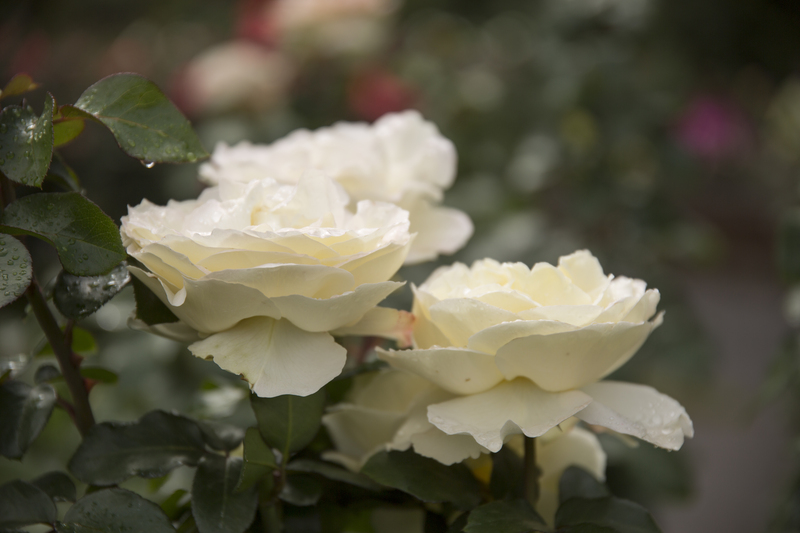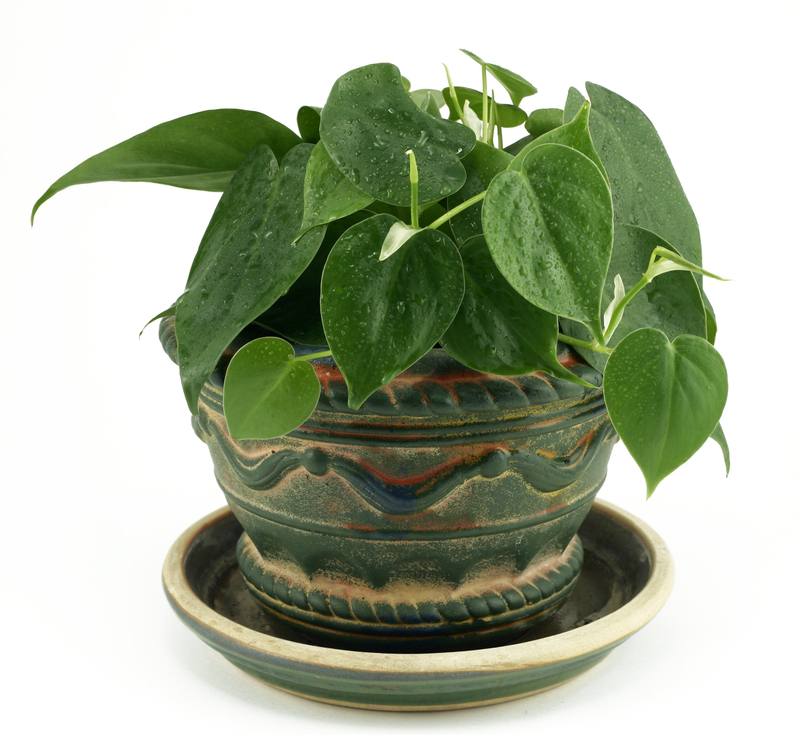Creative Tips for Shaded Garden Planting
Posted on 02/11/2024
Gardening in shaded areas presents a unique set of challenges and opportunities. Unlike their sunlit counterparts, shaded gardens play with a different palette of light and colors. Whether you're dealing with partial shade, light shade, or deep shade, knowing how to harness these factors can turn your shaded garden into a lush, tranquil haven. Here, we'll explore some creative tips for shaded garden planting that will help you make the most out of every inch of shade.
Understanding Shade: Different Levels and Their Impact
Before diving into planting techniques, it's essential to understand the different levels of shade and their impact on plant growth. Shade can be broadly classified into three categories:
- Light shade: Areas that receive 3-6 hours of direct sunlight but are shaded for a significant part of the day.
- Partial shade: Regions that get 2-4 hours of direct sunlight, often in the form of dappled light filtering through tree leaves.
- Deep shade: Sections that receive less than 2 hours of direct sunlight, mainly shaded throughout the day, like under dense tree canopies or beside tall structures.
Identifying the type of shade in your garden is crucial for selecting the right plants and planning your garden's layout effectively.

Choosing the Right Plants for Shaded Areas
Not all plants thrive in shaded conditions, but many species are well-adapted to low light environments. Here are some stellar options for each type of shade:
- Light shade: Hostas, ferns, and bleeding hearts. These plants can tolerate some sunlight but also thrive when partially shaded.
- Partial shade: Astilbes and Japanese anemones. These plants enjoy the dappled light and provide vibrant colors throughout the growing season.
- Deep shade: Hellebores, foxgloves, and lily of the valley. They do exceptionally well in low-light conditions, adding texture and subtle beauty to the garden.
Selecting a variety of plants ensures a lush and diverse garden, bringing interest and a touch of nature's resilience to shaded spots.
Design Tips for Creating an Intriguing Shaded Garden
A well-designed shaded garden can be just as captivating as a sunny one. Here are some design strategies to consider:
Use of Foliage for Texture and Color
In shaded areas where flowering may be less prominent, foliage takes center stage. Look for plants with interesting leaf shapes and colors. Variegated leaves, like those found on hostas and ferns, add depth and contrast. The silvery undersides of some plants or the purple tones of others can also brighten up a dark corner.
Incorporate Structural Elements
Structures such as pergolas, arbors, and trellises can add vertical interest to a shaded garden. They can also support climbing plants that thrive in shade, such as ivy and climbing hydrangea. Additionally, sculptures and water features can become focal points, providing aesthetic appeal even when plants are out of season.
Create Pathways
A well-placed pathway not only provides access but also encourages exploration. Use materials like stepping stones, gravel, or wood chips that blend seamlessly with the natural environment. Curving paths create a sense of mystery, making the garden seem larger and more enchanting.
Soil Management and Moisture Control
Shaded gardens often have different soil and moisture requirements compared to sunnier areas. Here's how to manage these aspects effectively:
Improve Soil Drainage
Compact soil is a common issue in shaded areas under trees. To improve drainage, consider adding organic matter such as compost or well-rotted manure. Raised beds can also be a great solution, as they allow for better control over soil quality and drainage.
Mulching
Applying a layer of mulch helps retain moisture, suppress weeds, and maintain a consistent soil temperature. Organic mulches like shredded bark, leaf mold, or wood chips are particularly beneficial, as they decompose over time, adding nutrients back into the soil.
Watering Strategies
Shaded gardens generally require less frequent watering than sunny ones. However, it's essential to monitor soil moisture, especially during dry spells. Drip irrigation or soaker hoses can provide consistent moisture directly to the roots where it's needed most.
Maximizing Potential with Shade-Tolerant Edibles
Who says a shaded garden can't be productive? Many edible plants tolerate and even prefer shaded conditions. Here are some options to consider:
Leafy Greens
Spinach, lettuce, and arugula grow well in partial shade and can be harvested multiple times throughout the growing season. These greens prefer cooler temperatures and are less likely to bolt in shaded areas.
Herbs
Many herbs, such as mint, cilantro, and parsley, can handle lower light conditions. Plant them in containers or garden beds where they can receive dappled light.
Root Vegetables
Vegetables like carrots, radishes, and beets can grow in partial shade as long as they receive a few hours of sunlight each day. Their underground growth habit makes them more adaptable to low light conditions.
Consider the Seasonal Dynamics of Shade
The amount and quality of shade in your garden can change with the seasons. Deciduous trees, for instance, provide heavy shade in summer, but allow more light through after they shed their leaves in fall and winter.
Spring Planting
Take advantage of the early spring sun before the trees leaf out fully by planting spring ephemerals such as trilliums, bloodroot, and Virginia bluebells. These plants complete their life cycle before the canopy closes over, making them perfect for early-season interest.
Seasonal Adjustments
Consider using moveable containers to adjust to changing light conditions throughout the year. This flexibility allows you to shift plants to sunnier spots as needed or bring them closer to complement blooming cycles.
Maintenance Tips for Shaded Gardens
Keeping a shaded garden vibrant and healthy requires regular maintenance. Here are some tips:
Pruning and Thinning
Prune overhanging branches to allow more light to filter through and improve air circulation. Thinning out plantings periodically can prevent overcrowding and deter pests and diseases.
Weeding
Weeds can be less of an issue in shaded gardens due to lower sunlight levels, but it's still vital to remove them promptly as they appear. Weeds can rob your plants of essential nutrients, water, and space.
Fertilizing
Shaded plants may not need as much fertilizer as sun-loving ones, but they still benefit from occasional feeding. Use a balanced, slow-release fertilizer in spring and mid-summer to support healthy growth.

Creating a Tranquil Space
Shaded gardens often naturally lend themselves to serene and tranquil spaces. Consider incorporating elements like a comfortable seating area, a small fish pond, or a trickling water feature. The soothing sound of water can mask background noise and enhance the peaceful ambiance.
Lighting Up the Shade
While natural light may be limited, you can use artificial lighting to highlight key features and extend the usability of your garden into the evening. Solar-powered lights, fairy lights, and strategically placed spotlights can create a magical atmosphere.
Conclusion
Gardening in the shade can transform what may initially seem like a challenging space into a lush, captivating retreat. By understanding the different types of shade, choosing the right plants, and implementing thoughtful design processes, you can create a thriving shaded garden. Don't let the absence of direct sunlight deter you--instead, embrace the unique opportunities shaded gardens present to cultivate a tranquil and beautiful haven.
Incorporate these creative tips, and watch your shaded garden flourish into a stunning, serene escape. Happy gardening!



